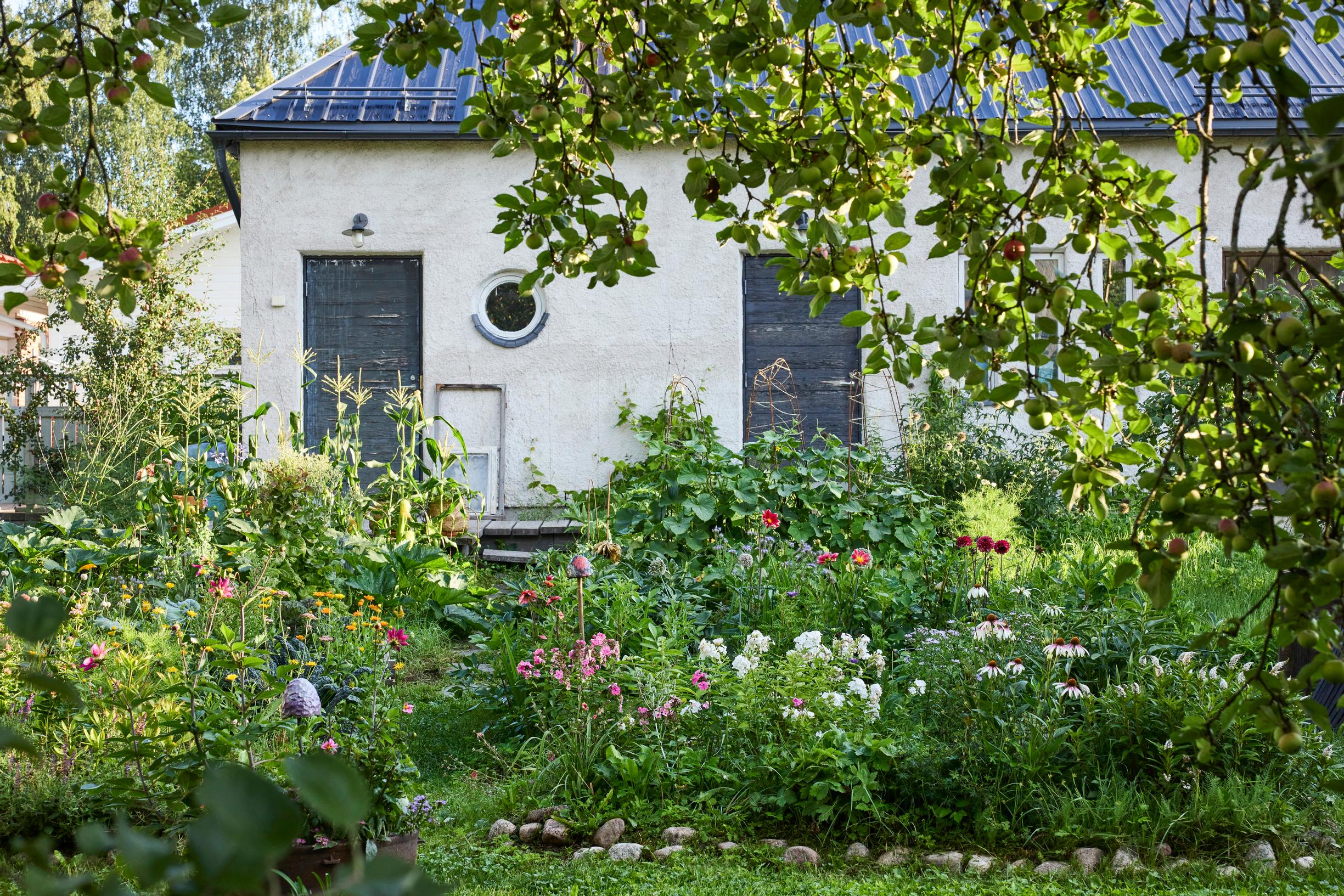
A remote office, a DIY pizza oven, and enchanting flowerbeds: step into Laura and Sampo’s garden
In this garden, edible and ornamental plants thrive side by side. For Laura, tomatoes and cucumbers are the most important vegetables, but she also aims to grow enough potatoes for her family of five. The yard house, built from recycled materials, provides a charming backdrop for the plants.
“Old fruit trees are the heart and soul of our yard. They bring a sense of layering and provide shade to our otherwise flat lot. We don’t know every apple variety, but we do recognize ‘Valkea Kuulas’ and ‘Kaneli.’ We enjoy the harvest freshly picked from the tree, pressed as juice, or dried into rings.”
The yard was quite overgrown when we moved in 12 years ago. The previous owner had lived here his entire life, so we were lucky to inherit apple trees already in their prime. We cleared it a bit but also planted more trees: pears, cherries, and recently a peach.
Our 1,200-square-meter lot (about 13,000 square feet) has heavy clay soil, which makes planting a challenge. On the other hand, the clay retains moisture in the ground. Conserving water is very important to me.
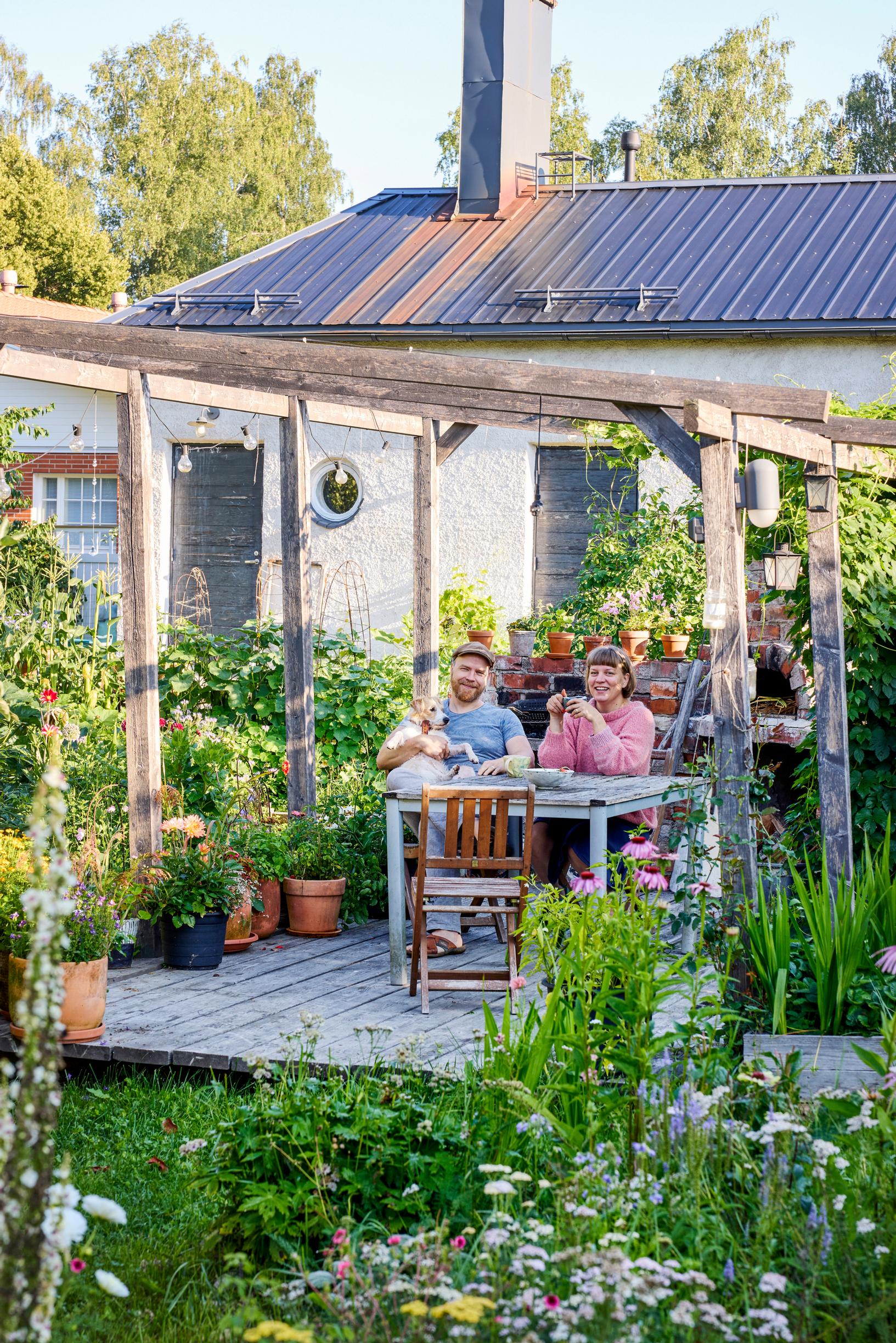
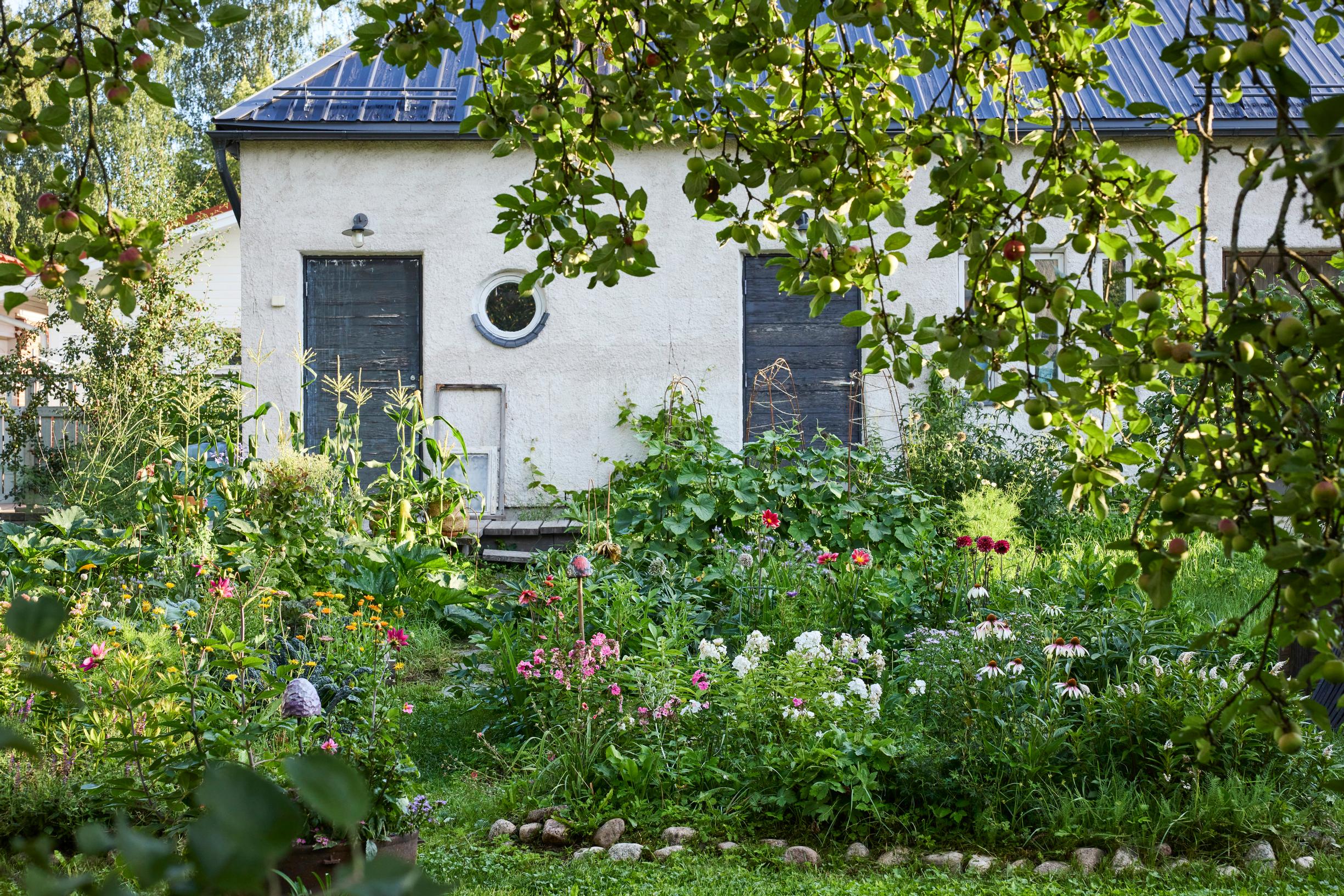
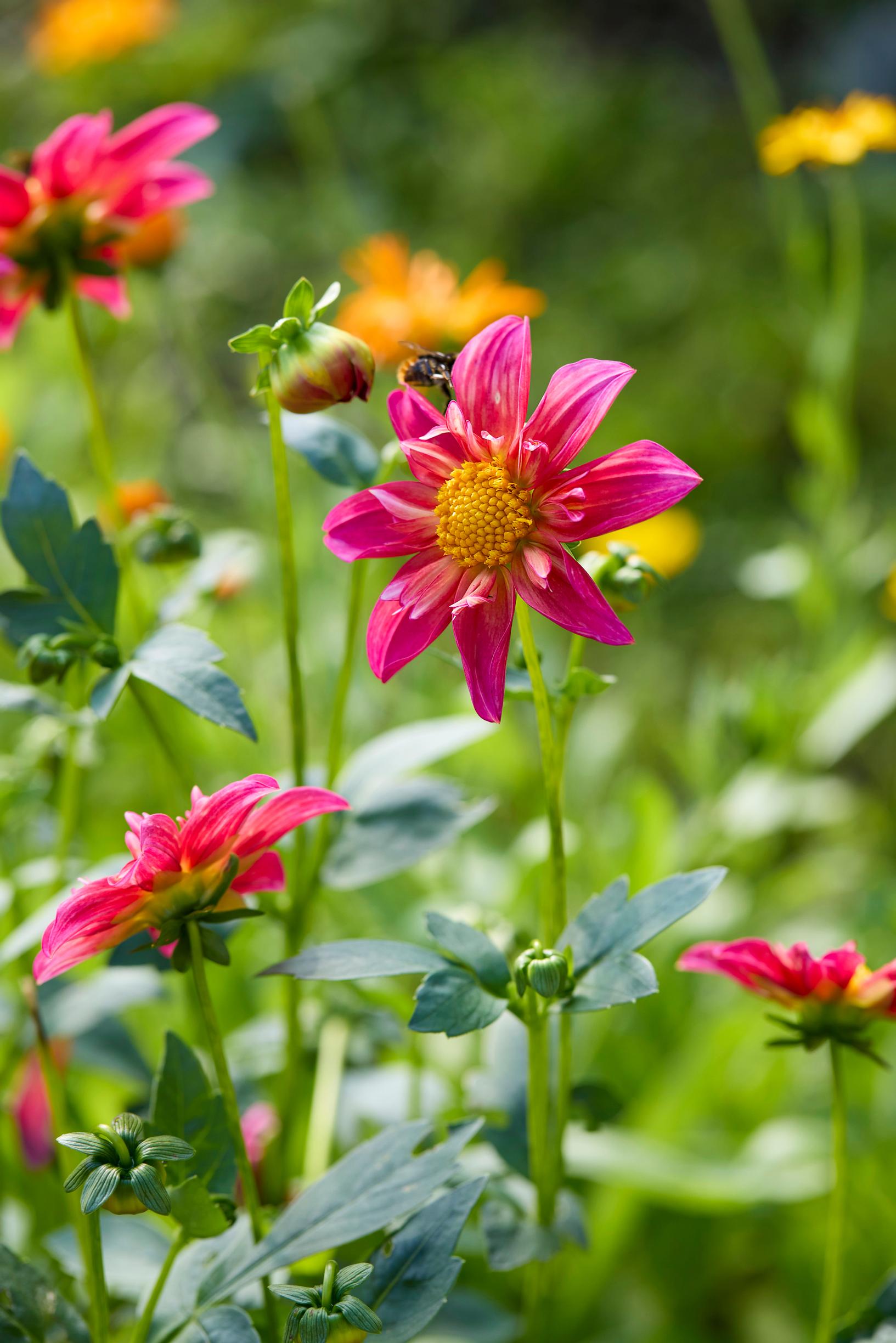
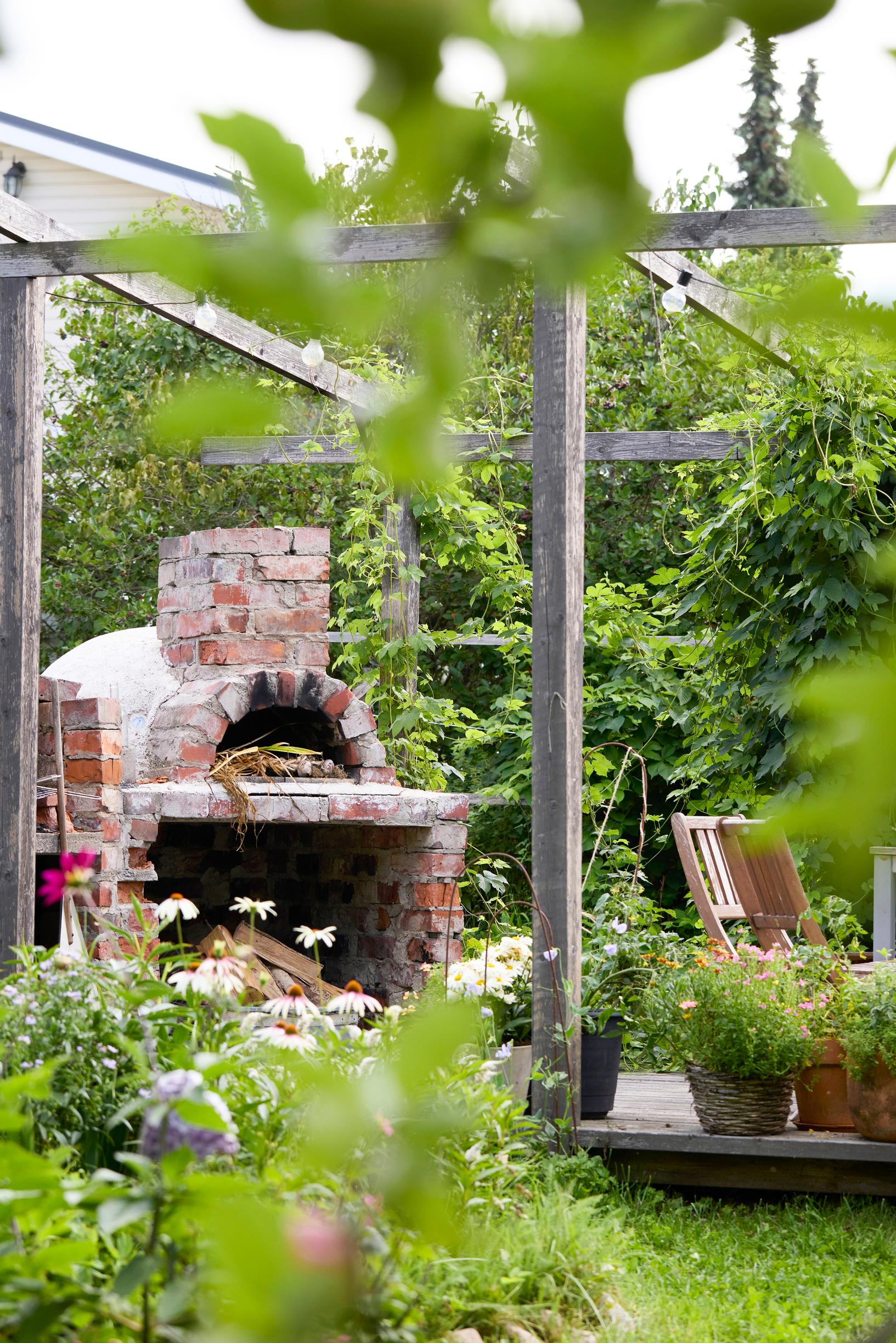
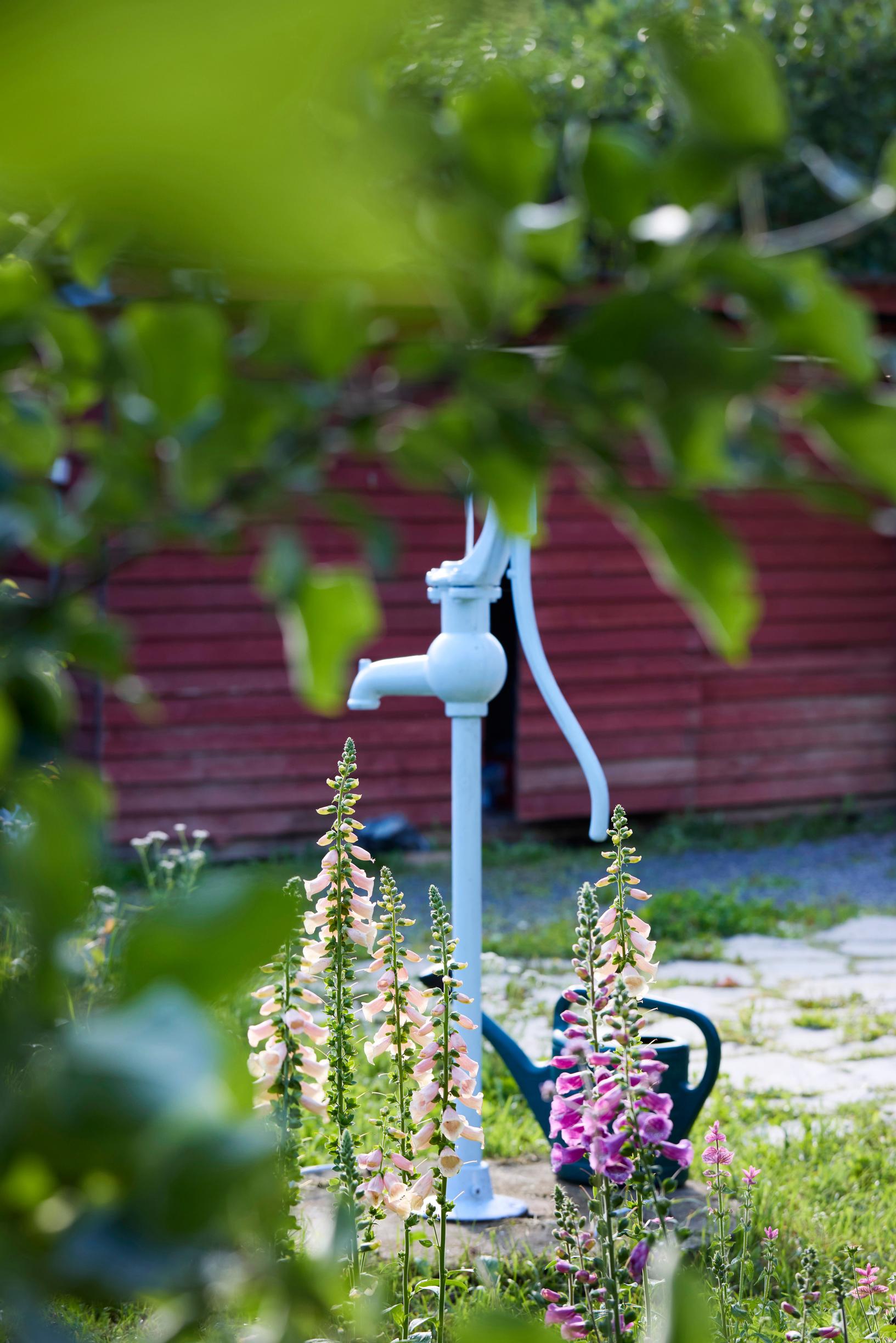
FOLK FUNCTIONALIST-STYLE Our home was built in 1941. We fell in love at first sight with the house’s simplicity and its yard. About ten years ago, we built a yard house from recycled materials for my sculptor husband Sampo Malin to use as his workshop. We’re especially proud of it. It fits so well with the old house that many people don’t realize it’s a newer structure. This lovely building provides a beautiful backdrop for the garden and especially for its edible plant section.
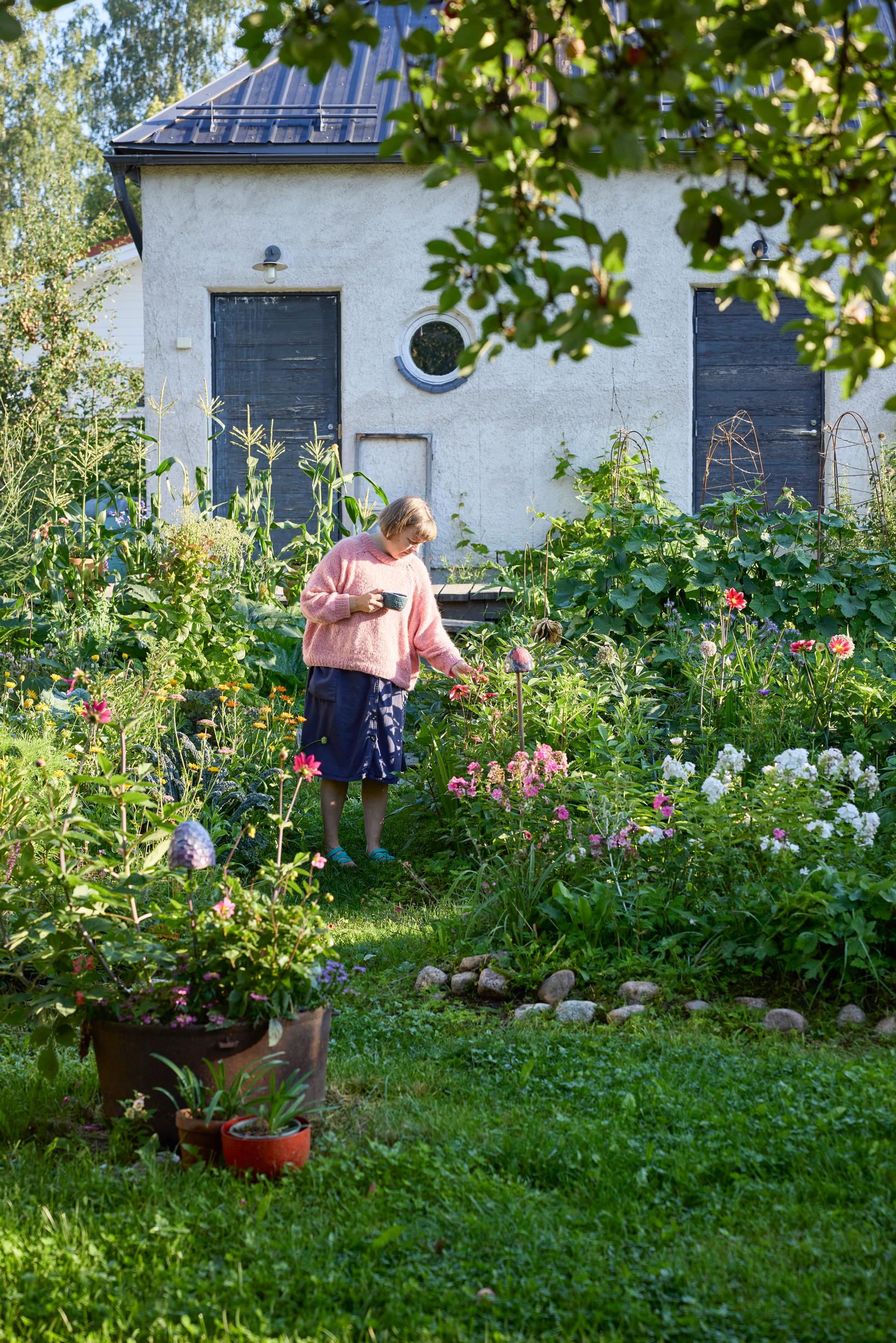
We have three school-age children, and they’re partly responsible for my enthusiasm for gardening. Our oldest was a toddler when I became pregnant with twins. I figured that at some point, we’d have three teenagers, so I set out to grow enough potatoes to feed us all.
Over time, though, I’ve let go of the idea of complete self-sufficiency. If that were my main goal, the yard would look totally different. Here, edible and ornamental plants flourish together, which isn’t the most efficient way to grow food. It’s really a garden of treats, and I also care about its aesthetics.
Still, growing my own produce is invaluable. In summer, I don’t need to go to the store for vegetables. When I head out for breakfast, I pick fresh berries and greens straight from the garden onto my plate.
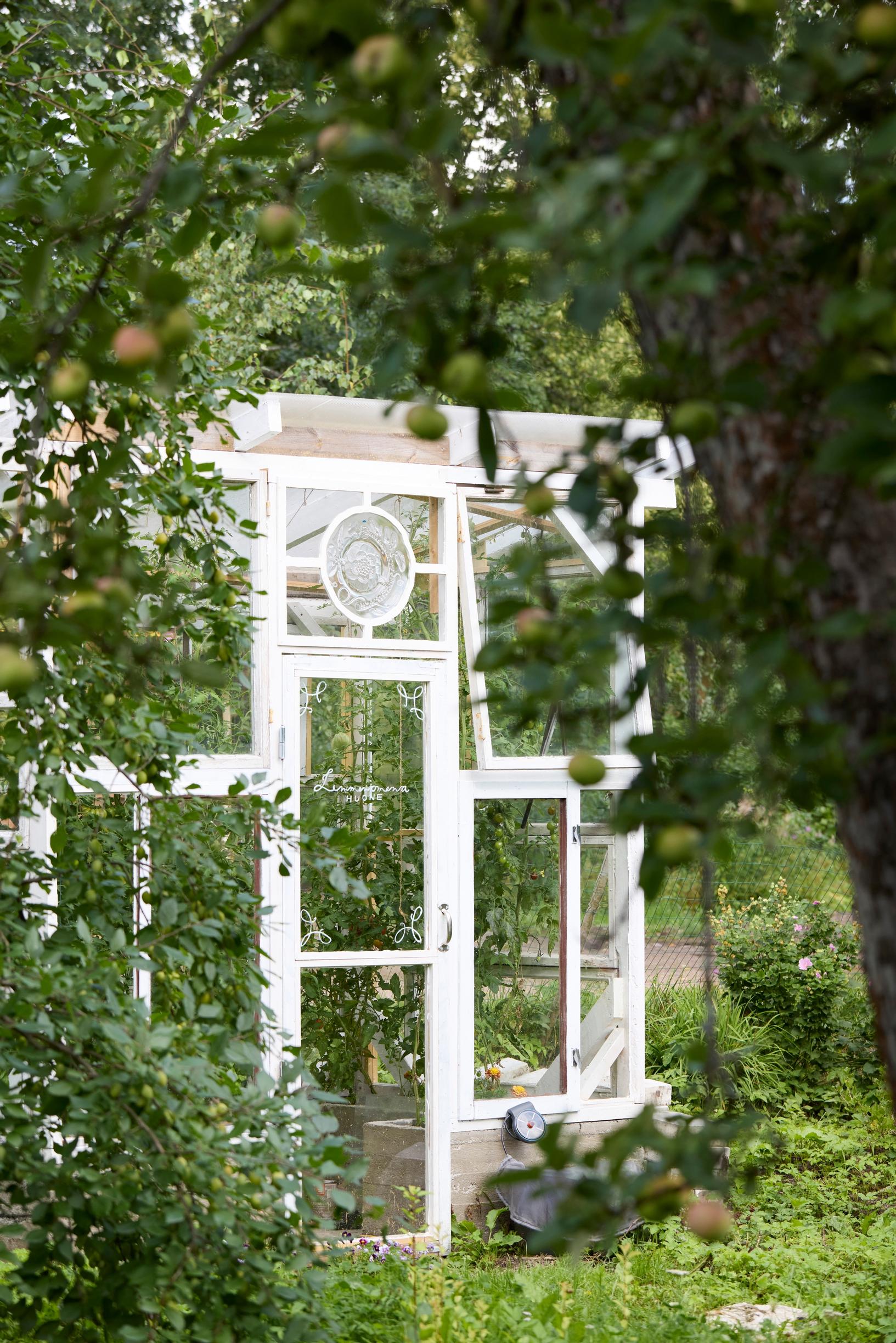
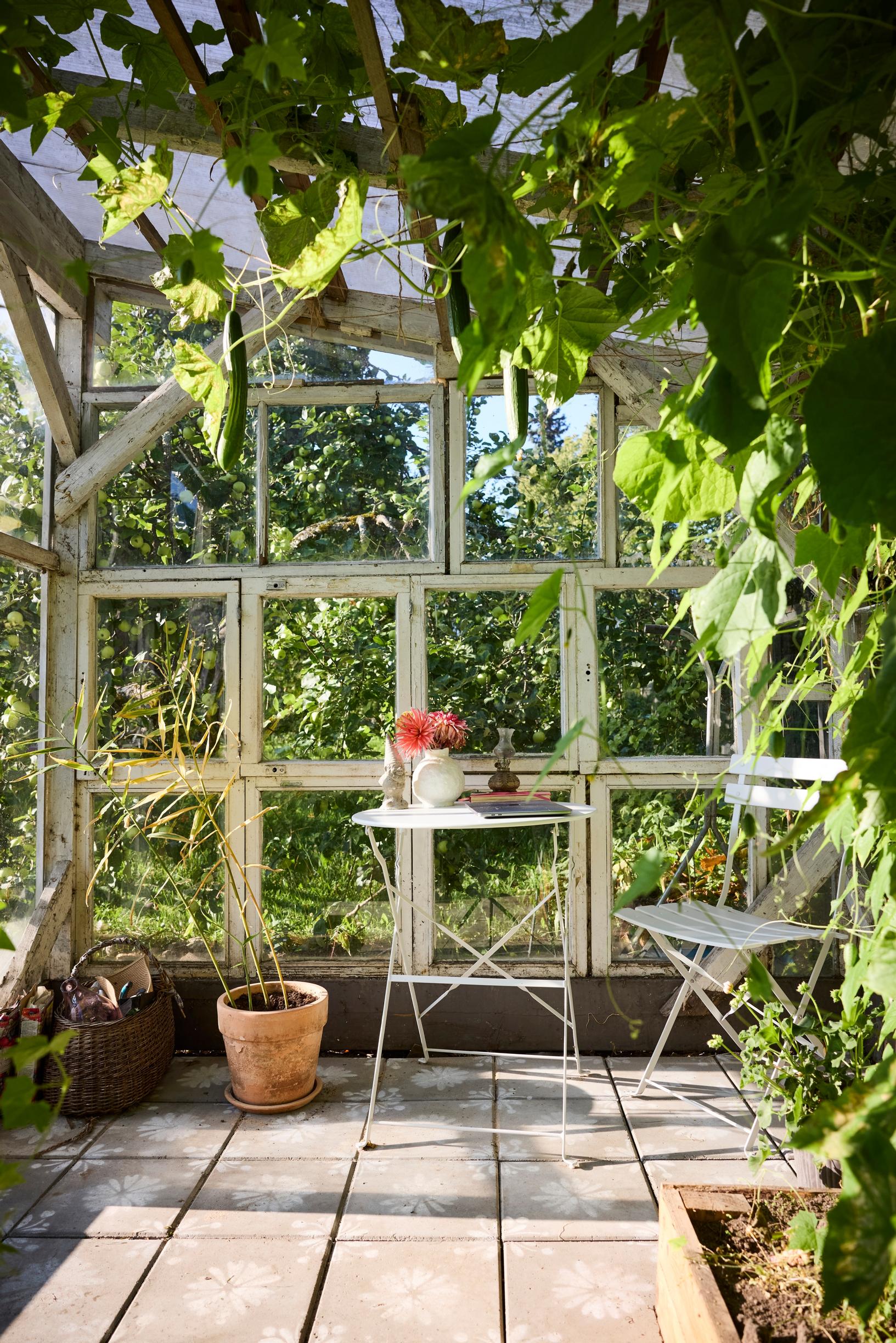
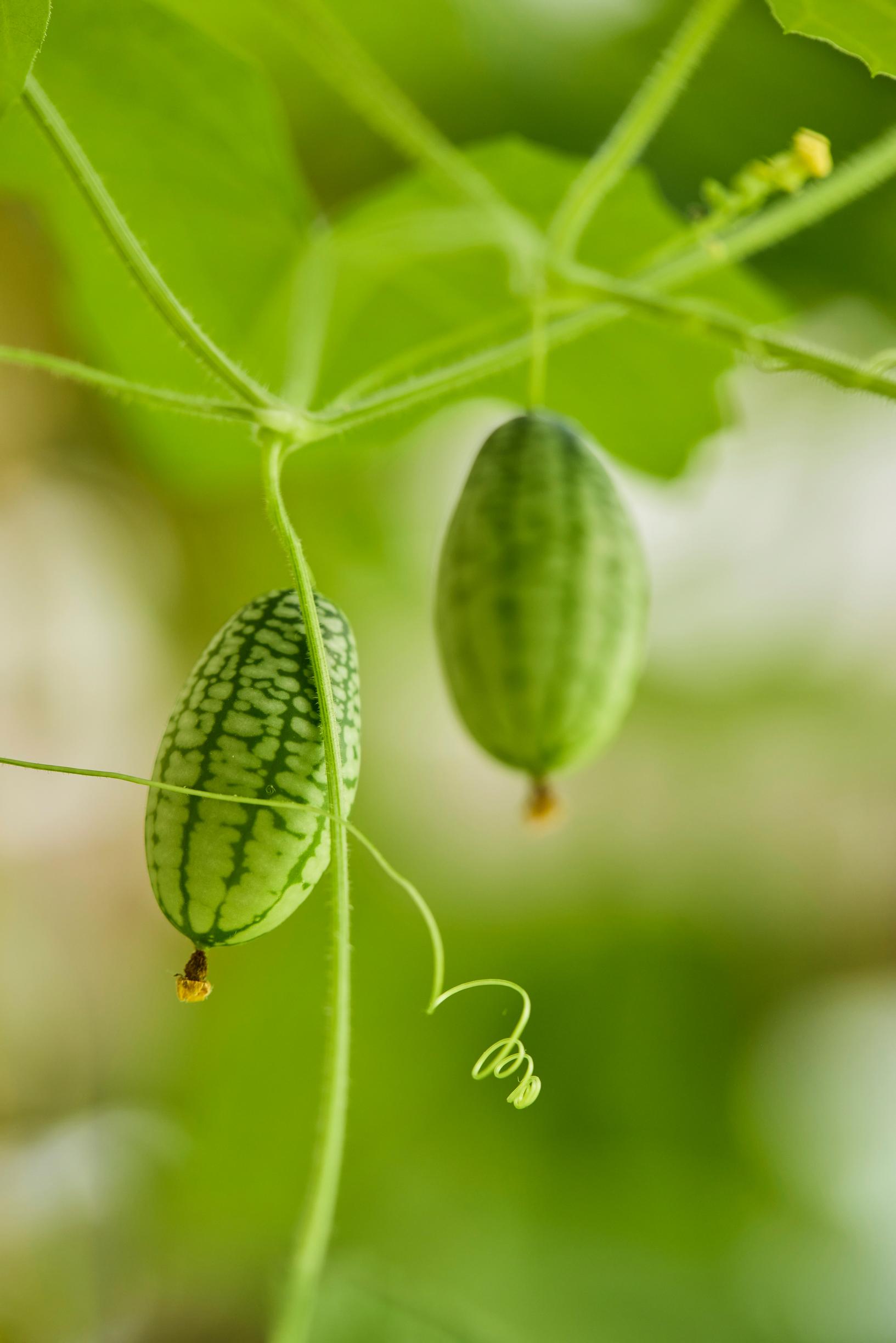
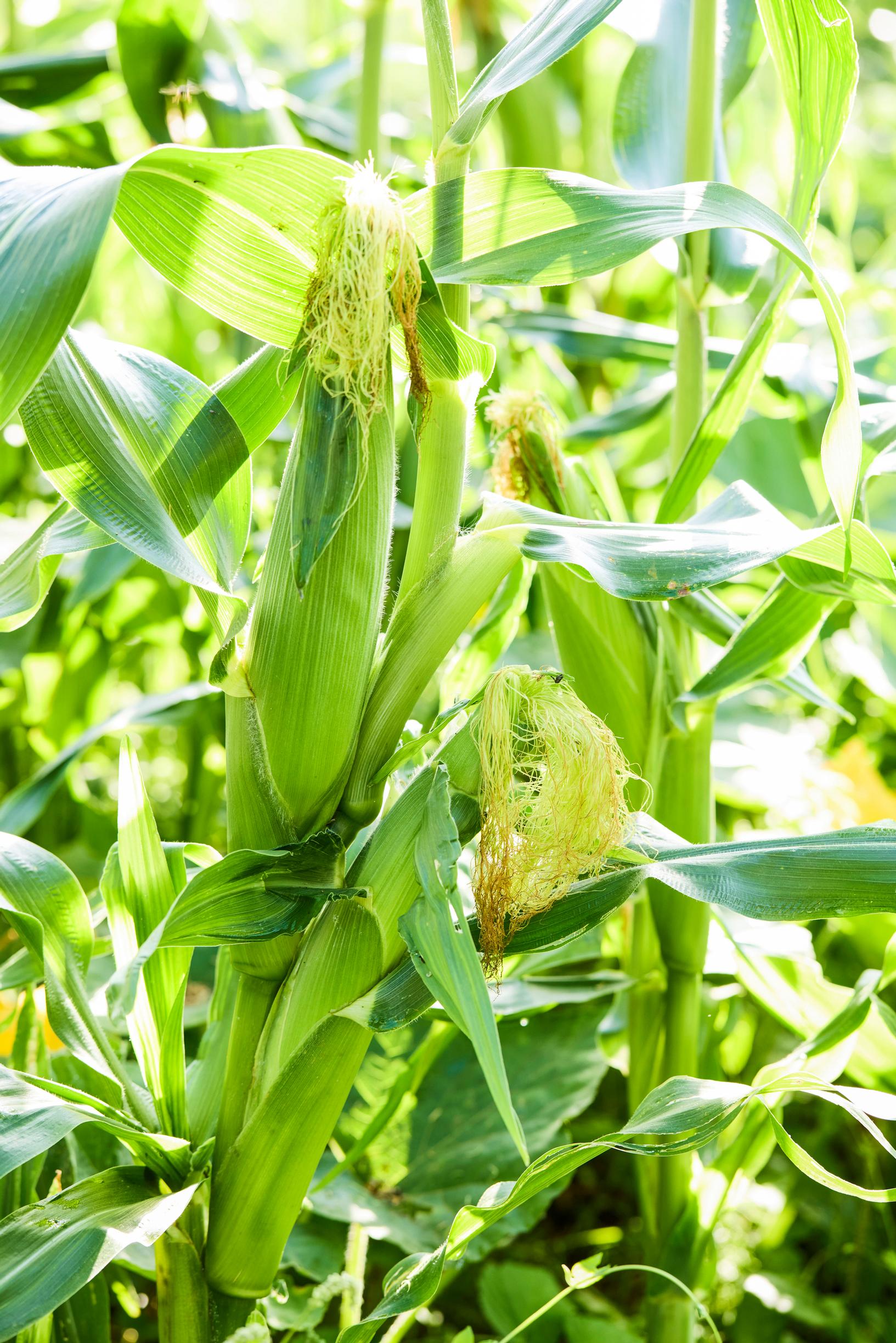
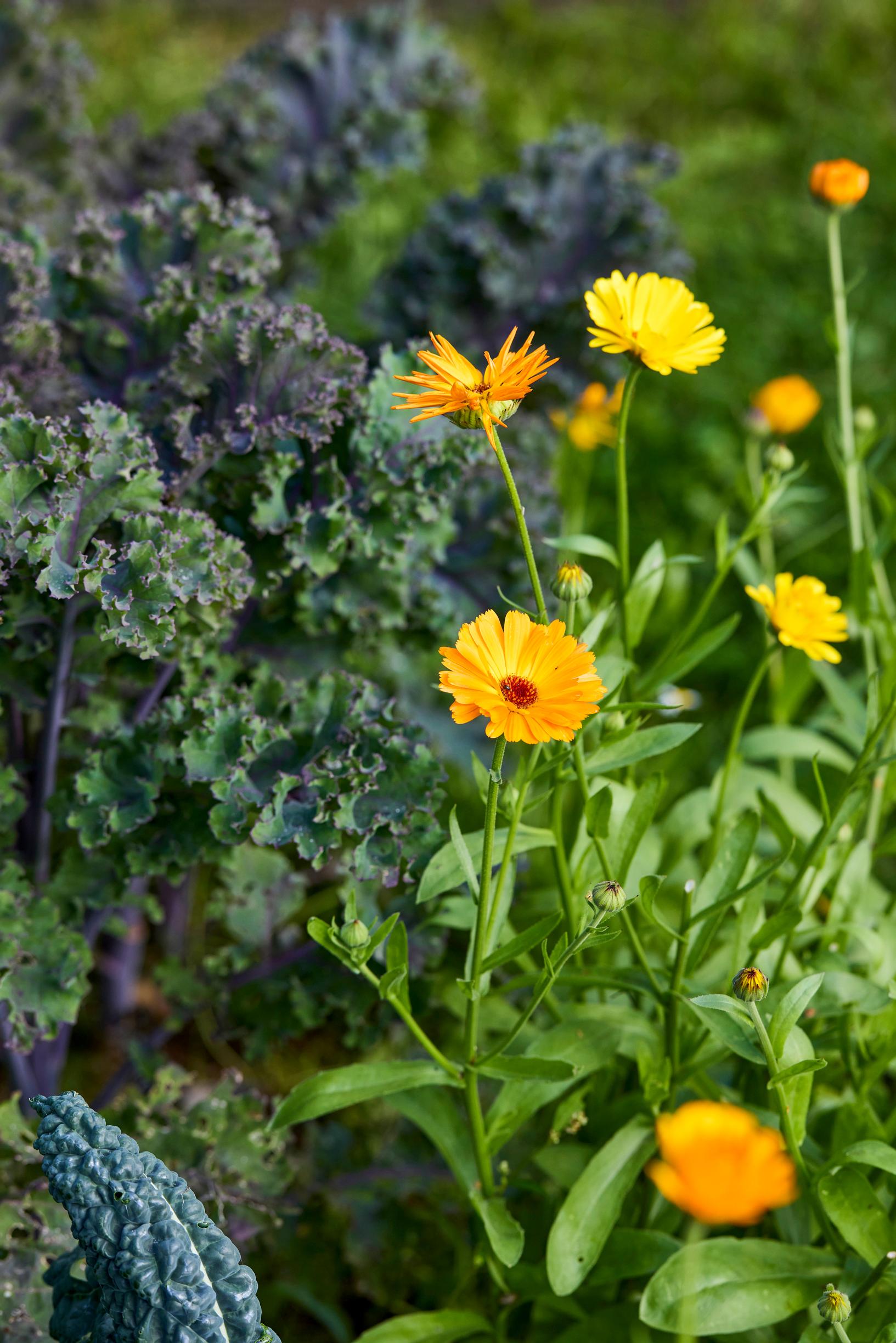
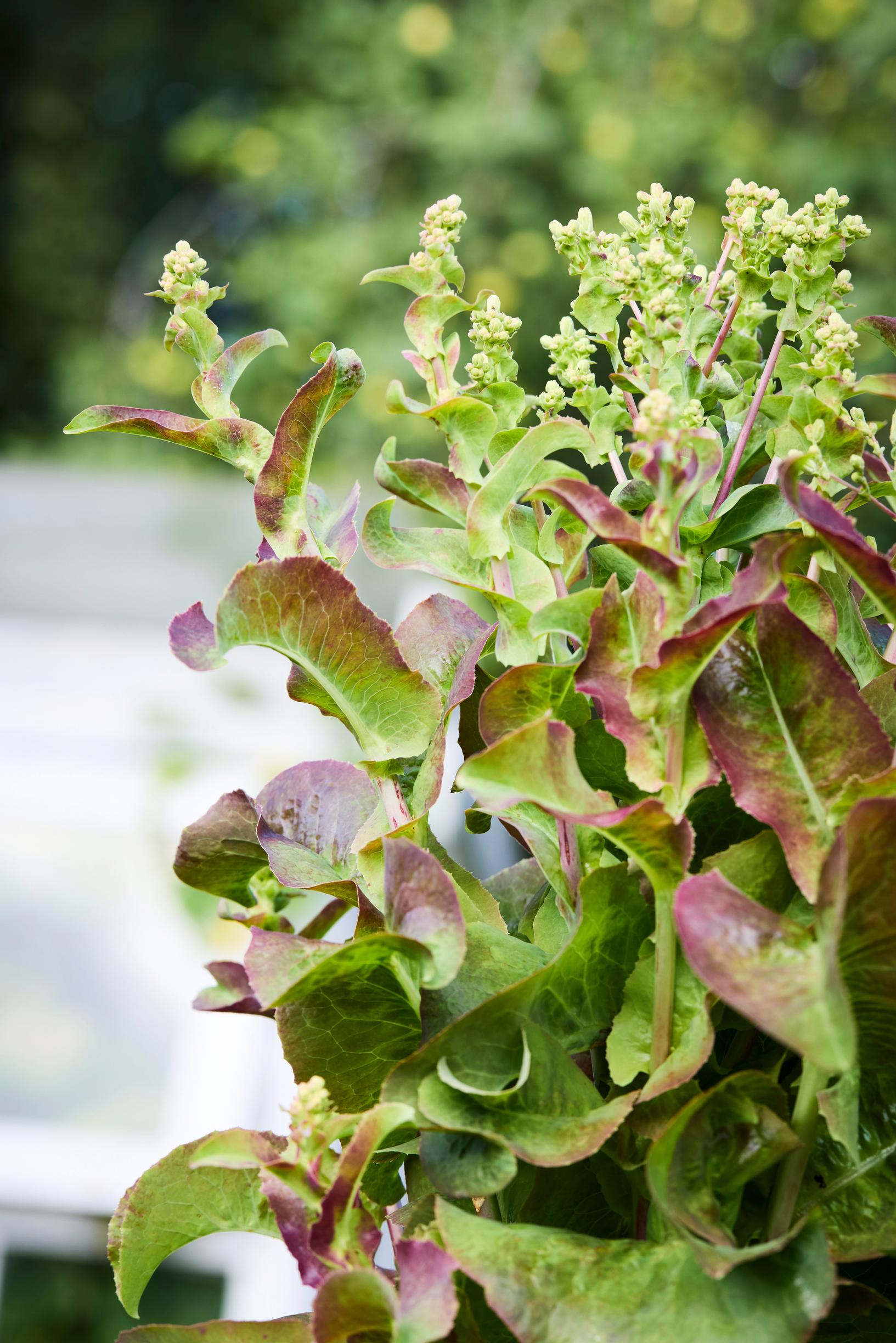
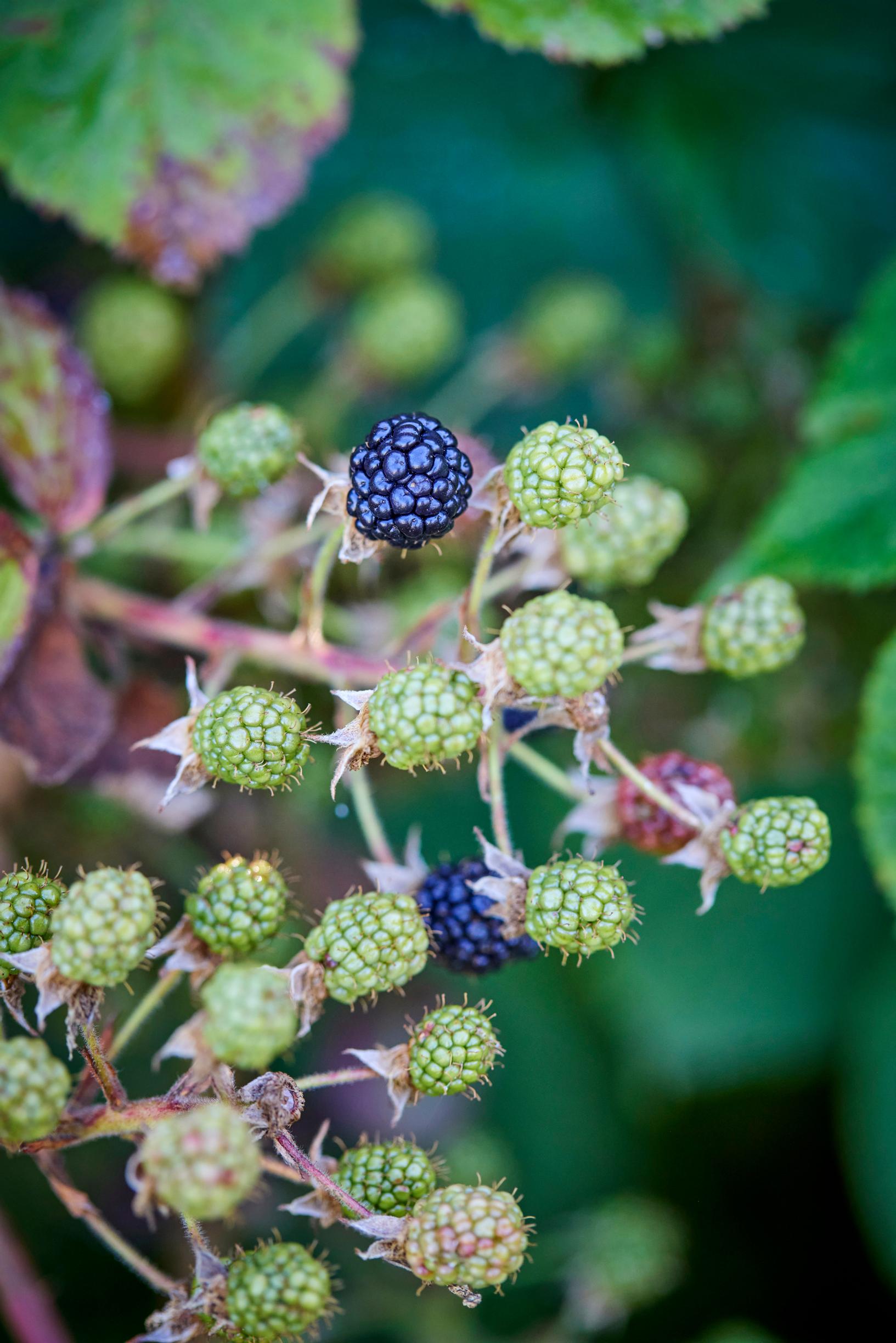
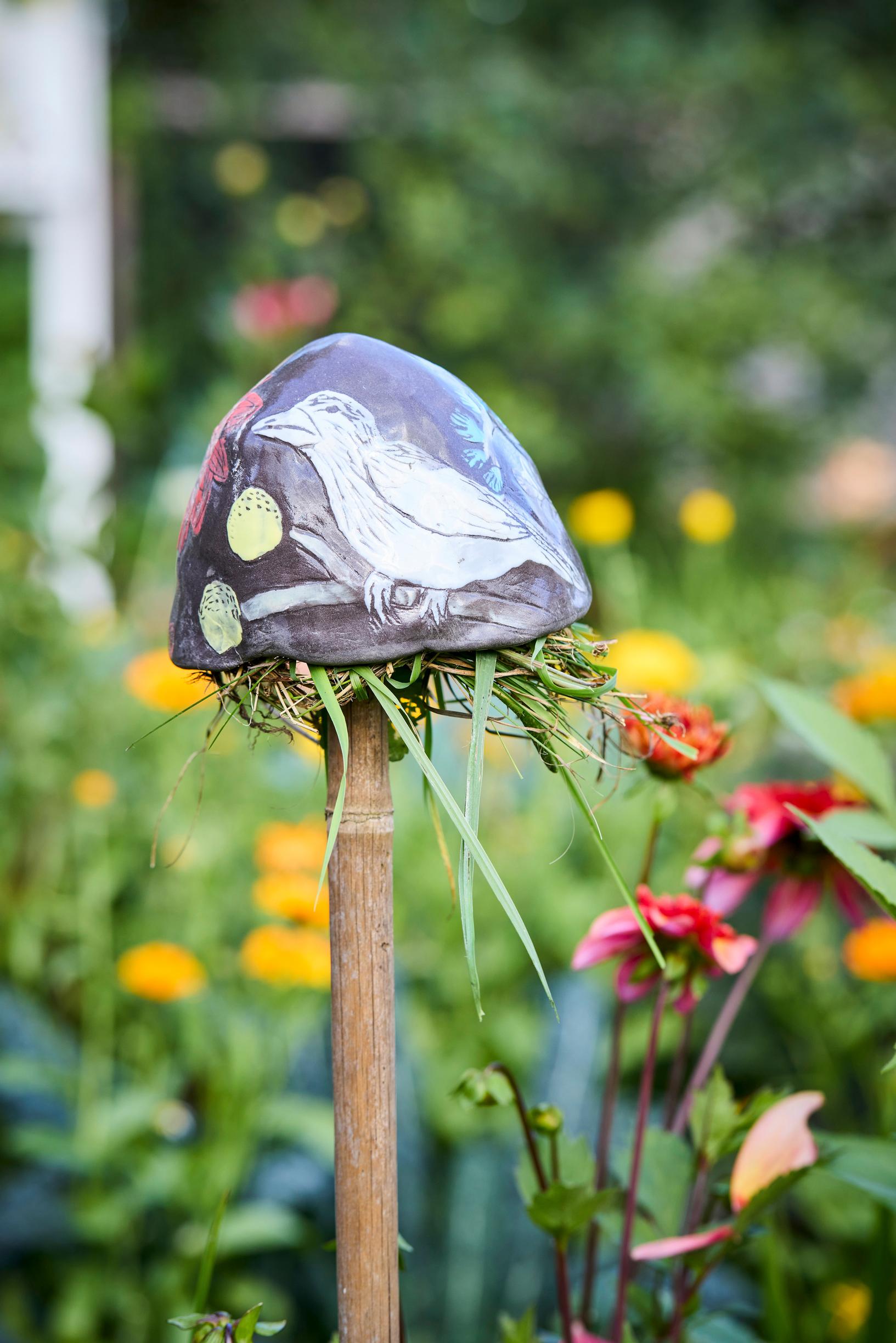
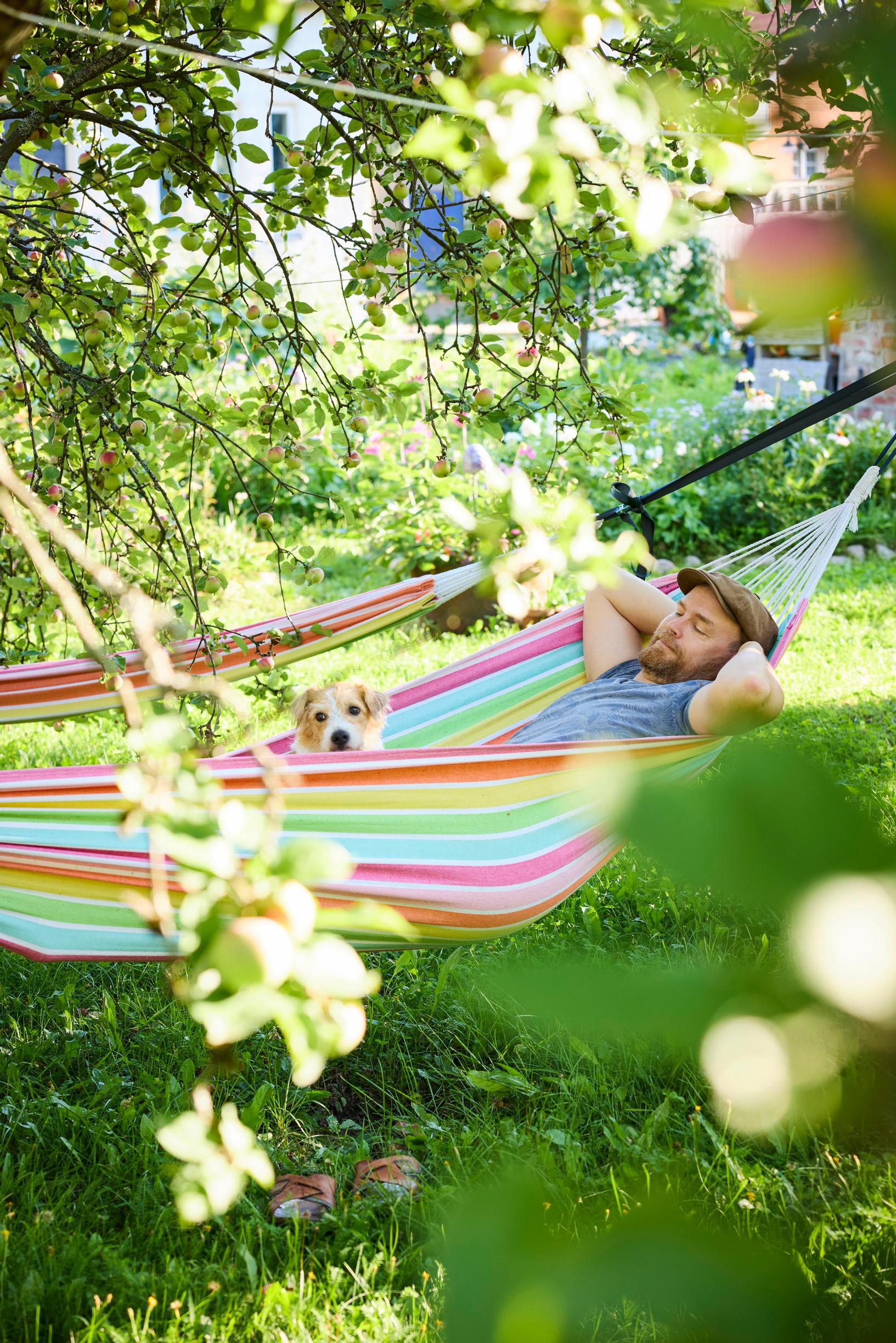
THE MOST IMPORTANT VEGETABLES are cucumbers and tomatoes. The cucumbers now have their own room. The tomatoes have a greenhouse I call the ‘love apple room,’ which reminds me of my grandmother’s small tomato house with its nostalgic scent.
I’m not terribly strict about fertilizing, but tomatoes absolutely need extra nutrients. Our greenhouse isn’t heated, so I plant seedlings only after the risk of frost has passed. It has a drip irrigation system that I couldn’t do without. I remove the suckers regularly, but I’m not overly meticulous about it.
These days, I collect seeds from my own tomatoes. I simply wipe them off the pulp onto a paper towel to dry. They always sprout, regardless of age. I joked with my kids that one day, they’ll inherit my favorite tomato seed collection.
(the article continues after the info box)
Four of Laura’s favorite tomatoes
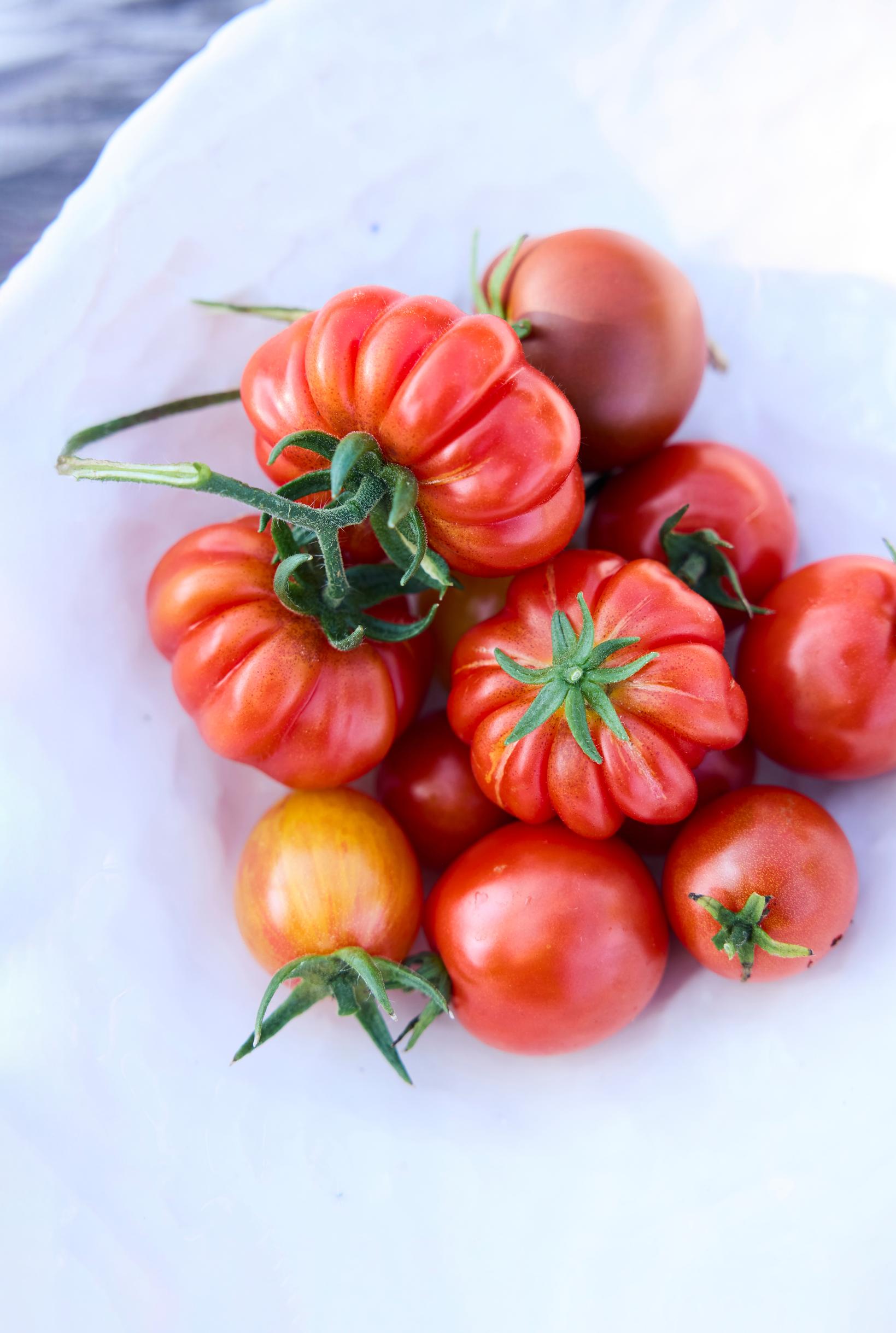
1. Beefsteak tomato ‘Costoluto Fiorentino’
Large, ribbed fruits that are excellent fresh or in pasta sauces. This old Italian variety has been around since the early 1900s.
2. Cherry tomato ‘Bronzy’
A juicy, flavorful snacking tomato with thin, reddish-brown skin. It does well in a greenhouse or in a sheltered outdoor spot.
3. Indeterminate tomato ‘Tigerella’
A red tomato with yellow stripes. Medium-sized fruits have a slight acidic tang that adds character. This productive variety can also do well outside.
4. Bush tomato ‘Red Alert’
Ideal for pots on patios or balconies. It produces small, sweet fruits, and the bushes grow about 40–50 centimeters (16–20 inches) tall.
I love a garden whose flowerbeds include many species—some might even find it chaotic. The weeds blend in, and it’s exciting to see what actually comes up. This morning, I mixed my summer flower seeds in a cardamom jar. While I was weeding, I must have dropped them here and there along the way.
Sampo has started growing grapes along the yard house wall. The vines are still young, but it’s a sheltered spot. Our four-year-old dog, Sulo, keeps me company, trying his best to keep voles away. We also plant potatoes together: Sulo digs the holes, and I drop in the seed potatoes.
I don’t like to stray far because my garden is such a vital part of summer. I share this hobby with like-minded friends. We trade tips on new varieties, plant sales, and the wonders of gardening. Who else could understand a gardener who constantly posts updates about a developing dahlia bud?
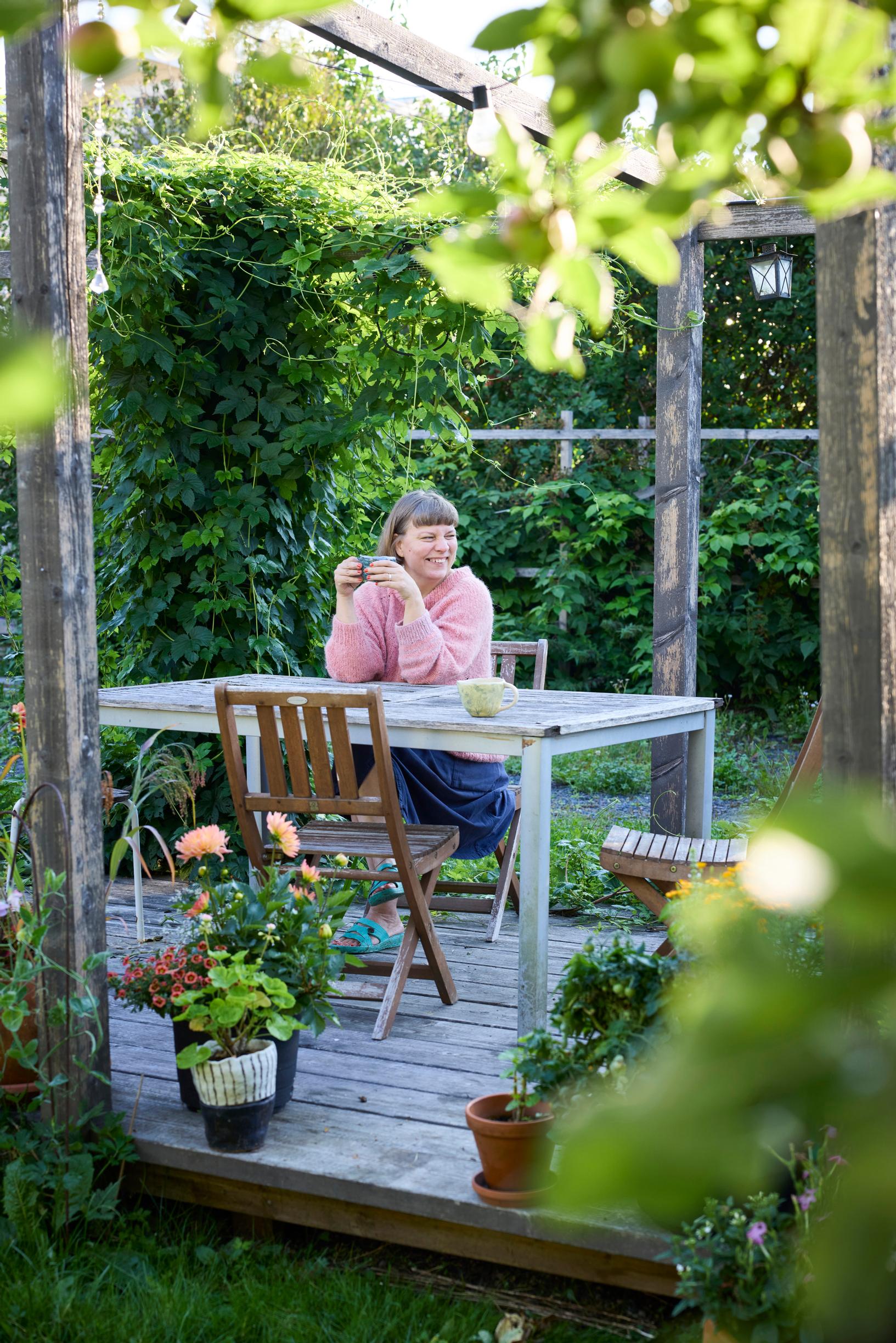
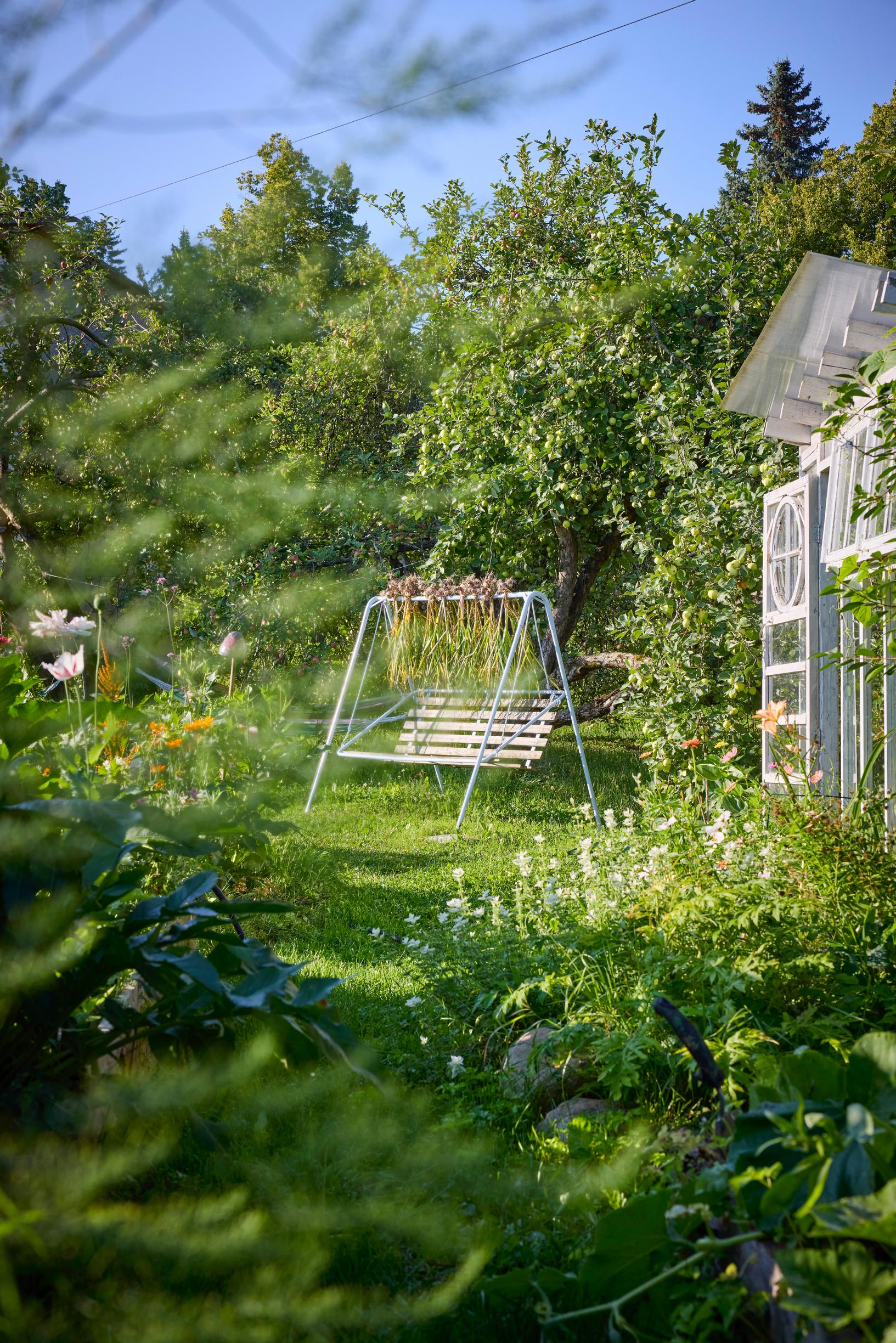
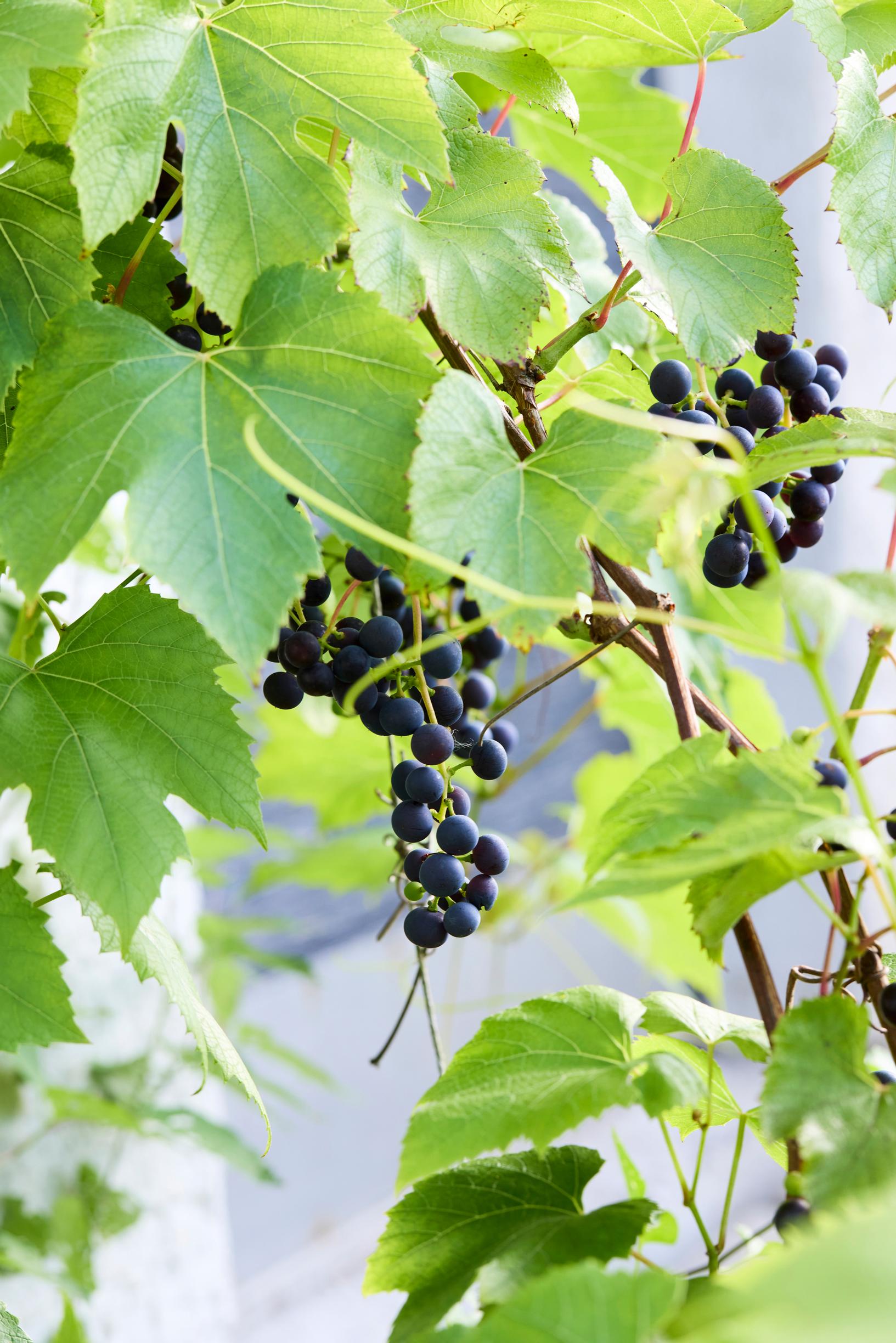
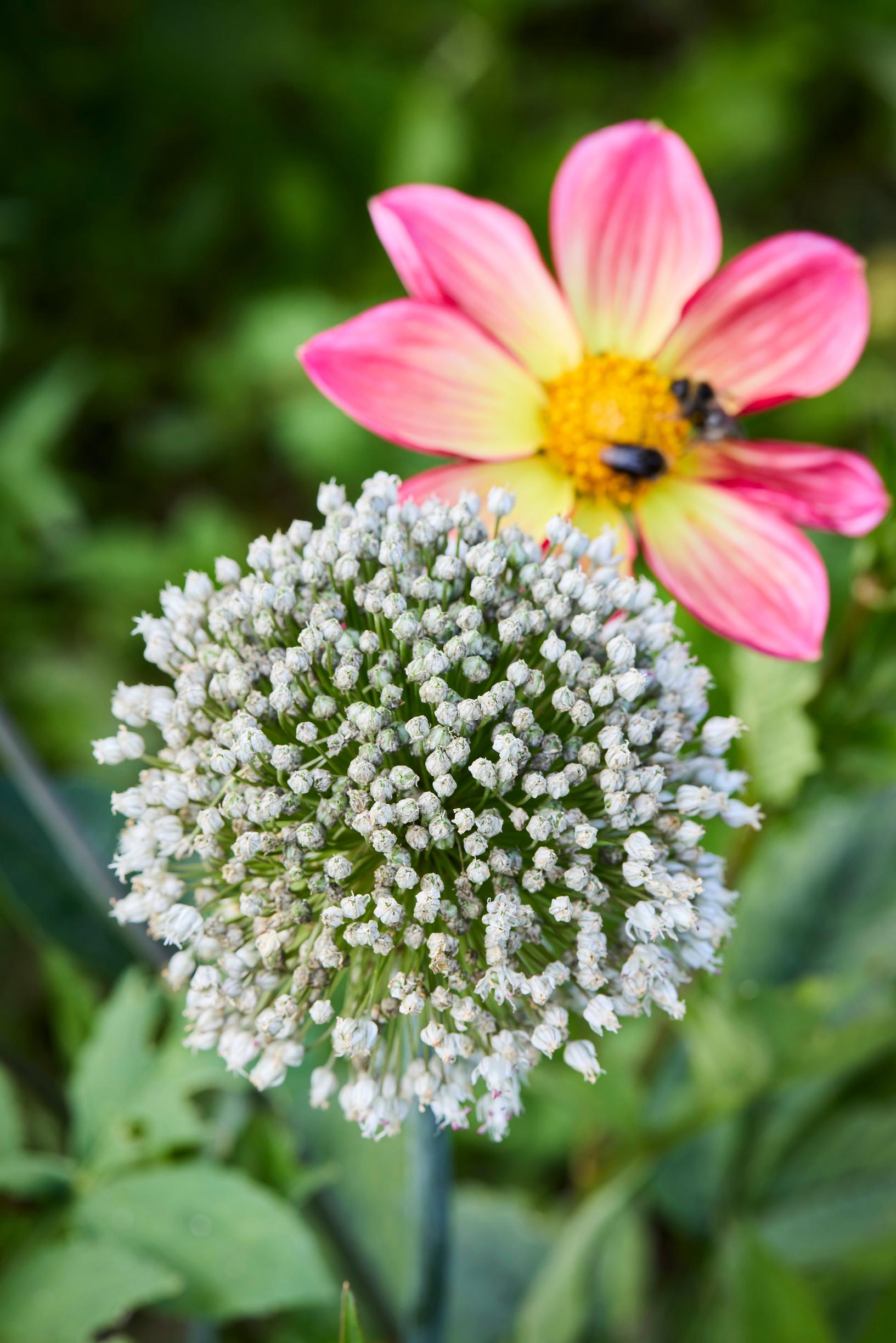
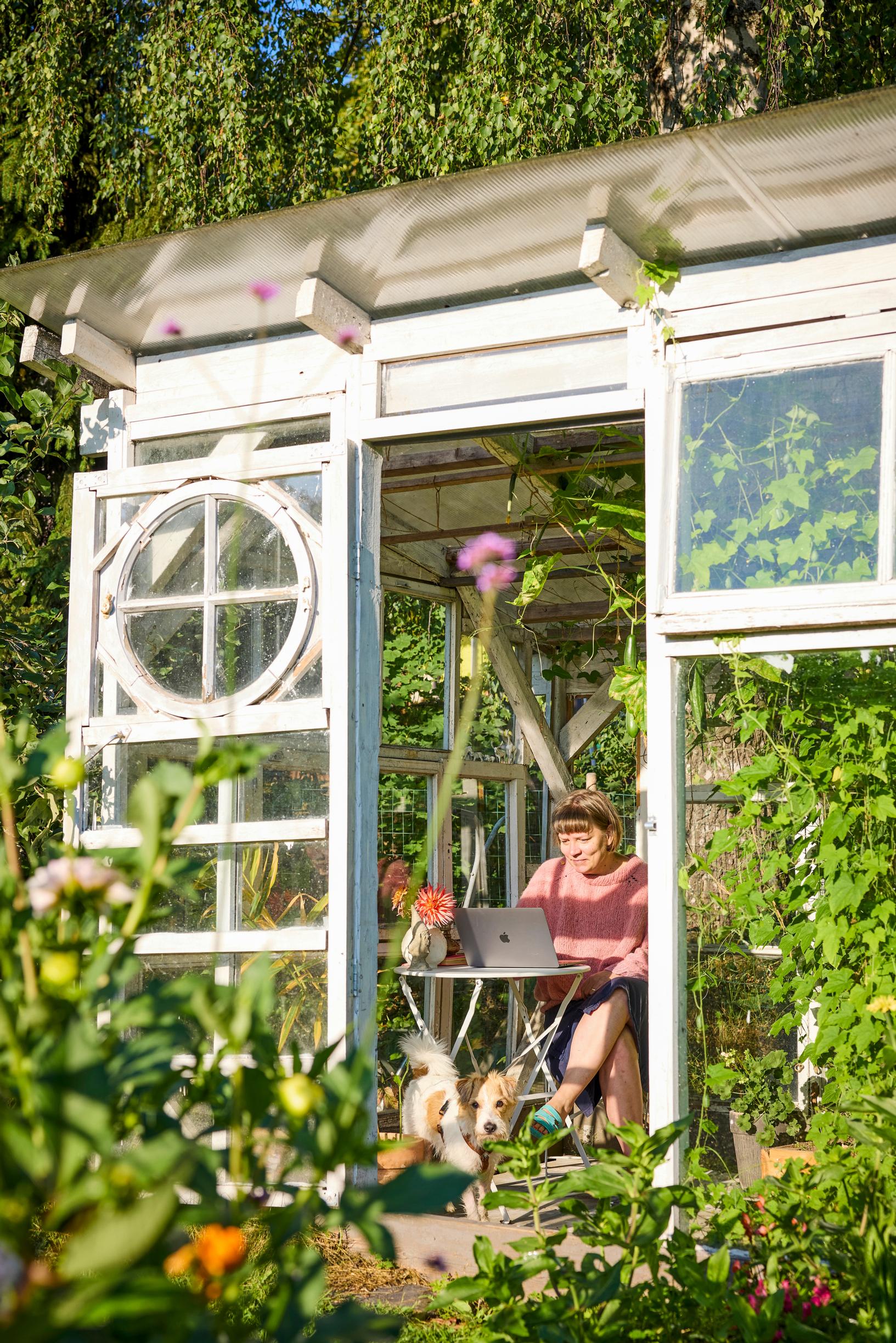
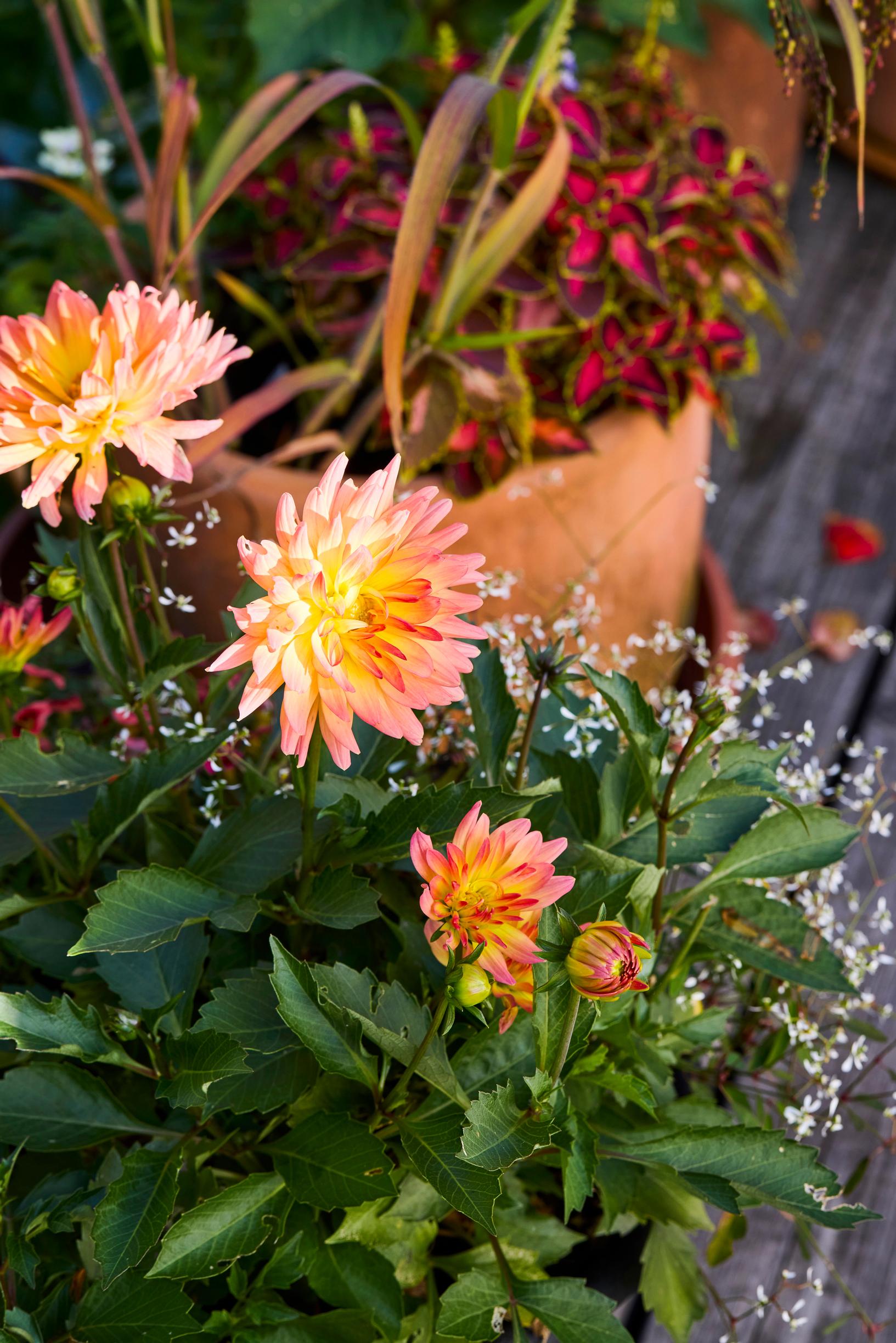
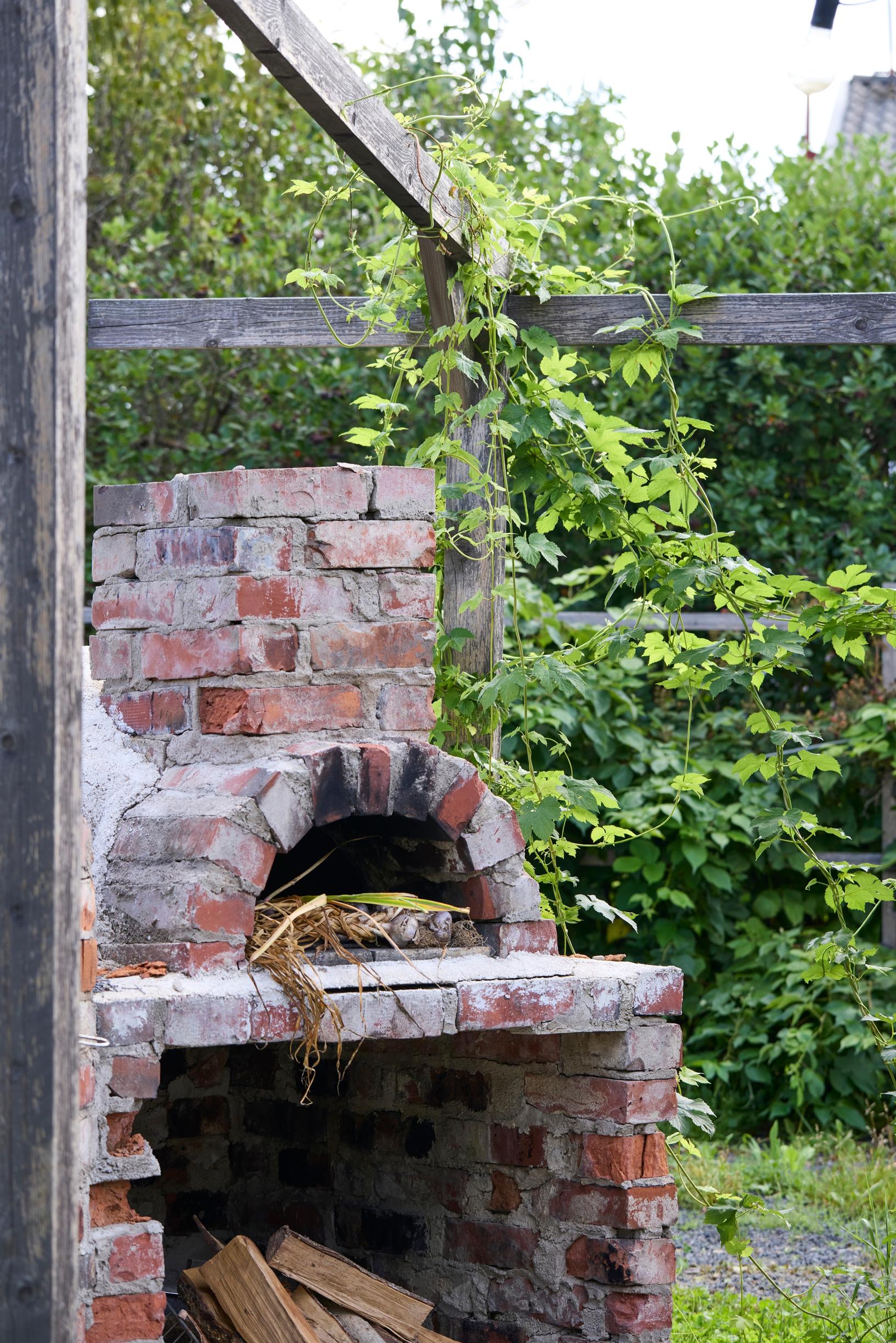
Laura’s tips for a cozy yard
1. Remember the trees
Begin your garden by planting trees, which grow slowly and need a lot of time. Trees bring layers to a flat yard that would otherwise be hot and less suitable for growing. Fruit trees offer the added bonus of a harvest.
2. Conserve water
Keep the soil covered to reduce evaporation. Climate change leads to more scorching summers, so prepare for drought by conserving the soil’s natural water.
3. Plant in a mix
Combine different species, varieties, colors, and heights in the same bed for a natural look. The plants benefit from one another, and there’s always something new to see.
4. Make use of insects
Help pollinators by placing both ornamental and edible plants together. Insects more easily find larger, varied plantings than scattered single-species plots. Thanks to pollinators, you’ll also get a richer harvest.
5. Listen to yourself
Create a garden that reflects your style. Grow crops you love to eat and flowers you enjoy seeing. Experiment with any idea that comes to mind—that’s how you learn.
6. Don’t get discouraged
Try again even if things don’t go perfectly at first. Your harvest depends on the weather and random factors you can’t always control. Next summer could be completely different.


